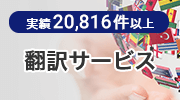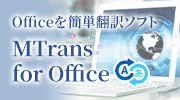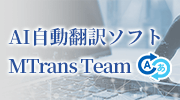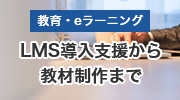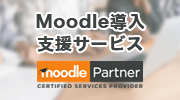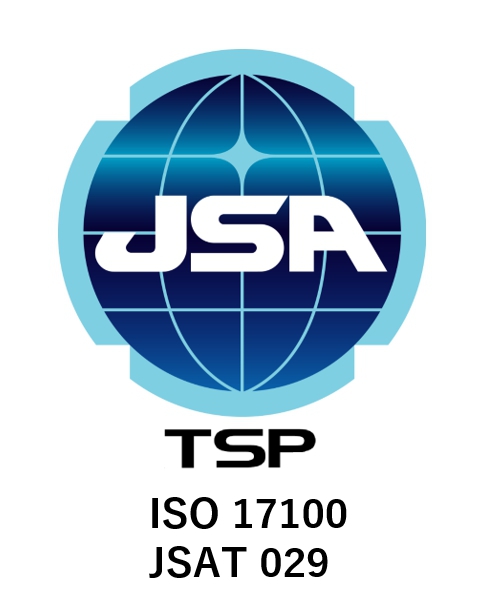
Not only at tourist spots but also in downtown office districts and local train stations, it has become common to see foreign tourists pulling suitcases. This vibrancy is a strong tailwind for the Japanese economy, and many companies are focusing on it as a new business opportunity. However, to make the most of this opportunity, there is an unavoidable challenge: the "language barrier." No matter how attractive the products or services are, if their value cannot be conveyed correctly, it may lead to decreased customer satisfaction and significant missed opportunities.
So, what exactly are effective "inbound measures"? In this article, we will first outline the basics and why their importance is increasing now, and then introduce detailed success stories of companies that have achieved results by effectively utilizing translation.
- Table of Contents
-
- 1. The Importance of Inbound Measures
- 1-1. What is Inbound Measures?
- 1-2. Background on Why Inbound Measures Have Become an Urgent Issue
- 2. Four Success Stories of Inbound Measures Through Translation
- 2-1. [Case ①] Major Department Store: A "Unchanging" DX Strategy That Achieved Company-wide Quality Improvement
- 2-2. [Case ②] Local Government: Taking Regional Appeal to the World Through Automated Tourism PR
- 2-3. [Case ③] Medium-Sized Hotel: Strengthening Customer Engagement through Rapid On-Site Information Dissemination
- 2-4. [Case ④] Medium-Sized Hotel: Transforming "Translation" into a Daily Task to Enhance the Organization's Overall Responsiveness
- 3. Three Key Success Points Derived from Successful Inbound Measures Cases
- 3-1. Point 1: Ease of Operation That Anyone Can Use
- 3-2. Point 2: Transition from "Specialized Tasks" to "Routine Tasks"
- 3-3. Point 3: Further Efficiency Through Template Utilization
- 3-4. Toward "Organizational" Multilingual Support in an Era of Labor Shortage
- 4. Summary
1. The Importance of Inbound Measures
1-1. What is Inbound Measures?
Inbound measures refer to initiatives aimed at promoting the acceptance of foreign tourists visiting Japan and improving their satisfaction. The main contents are as follows.
・Establishment of acceptance systems: Improving staff multilingual support skills and preparing customer service manuals
・Implementation of attraction promotions: Marketing activities and information dissemination targeting overseas
・Translation of information such as guides and brochures: Providing multilingual information at tourist facilities and accommodations
1-2. Background on Why Inbound Measures Have Become Urgent
・Rapid Recovery and Increase in the Number of Visitors to Japan
The number of foreign tourists visiting Japan has been increasing year by year, reaching 25 million in 2023 and exceeding 36 million in 2024. Although there was a temporary decline due to the impact of the COVID-19 pandemic, the numbers are now rapidly recovering, and the government has set a target of 60 million visitors by 2030. To respond to this rapid increase, many businesses are recognizing the necessity of multilingual support.
・Changes in Traveler Behavior and Diversification of Information Gathering
Modern inbound tourists to Japan tend to gather detailed information online in advance and increasingly decide their actions on-site using social media and review sites. Additionally, the proportion of individual travelers is rising, leading to a stronger demand for more detailed and accurate information. To respond to these changes, providing accurate and appealing multilingual information has become indispensable, and the importance of information transmission through translation is growing ever more significant.
・The Need to Maximize Economic Effects and Manage Risks
The inbound market is an important source of revenue for the Japanese economy, and appropriate multilingual support is expected to extend the length of stay and increase spending by foreign tourists. On the other hand, misunderstandings and communication failures caused by language barriers pose risks that can lead to decreased customer satisfaction and troubles. Accurate information transmission through translation is an essential means to maximize these economic opportunities while significantly reducing risks.
Against this backdrop, many companies and local governments are focusing on inbound measures utilizing translation, and the number of cases achieving actual results is increasing. Below, let's take a closer look at such success stories.
2. Four Selected Success Stories of Inbound Measures through Translation
Introducing four success stories of inbound measures through translation.
*This case is a hypothetical example to help visualize the actual implementation effects. It is not related to any real company, organization, or individual.
2-1. [Case ①] Major Department Store: A "No-Change" DX Strategy That Achieved Company-Wide Quality Improvement
At a major department store, strengthening the customer service system was an urgent task, especially at stores in urban areas with high inbound demand. They actively hired part-time staff from diverse nationalities, but the customer service manuals and in-store guide materials that served as their operational guidelines were all created in Japanese. This not only caused delays in training new staff but also led to serious problems where language barriers caused discrepancies in information among staff, resulting in inconsistent quality of customer guidance. In particular, during large-scale seasonal campaigns and floor renovations, a huge volume of material updates was required, and the translation work became a complete bottleneck, causing confusion on the ground.
In response to this challenge, the company selected a solution based on the policy of "not changing the on-site workflow at all." They introduced a tool that enables one-click translation directly within Microsoft Office, which all employees are already familiar with. This eliminated the need for operational training, which often becomes a barrier when introducing new systems, creating an environment where anyone could intuitively use it from day one. Furthermore, they cleverly balanced quality and efficiency by flexibly using different translation engines: DeepL and ChatGPT for documents requiring internal terminology and the polite expressions unique to customer service, and Google Translate for large volumes of reference materials where speed was prioritized.
The results of this initiative were remarkable. The quality of service became uniform across all stores regardless of staff nationality, and customer surveys received high praise, with comments such as "No matter which staff member I asked, I received smooth and accurate guidance." Internally, the multilingual rollout of campaign materials, which previously took several weeks, was completed in just a few days, enabling faster marketing strategies. Above all, the ease of completing all tasks within familiar files was welcomed on the front lines, and the translation work naturally shifted from being a "special task" to a "routine task," which can be said to be the greatest factor behind the success of this transformation.
2-2. [Case Study ②] Local Government: Taking Regional Appeal Global through Automated Tourism PR
In a certain local government, the tourism department was at the forefront of efforts to disseminate tourism information aimed at inbound visitors, but chronic budget and personnel constraints were major obstacles. In particular, creating multilingual brochures that convey the region's appeal required outsourcing to external translation companies, and the high costs and long delivery times were bottlenecks. As a result, updates were limited to once a year, making it impossible to timely reflect seasonal event information or introductions of newly opened facilities, causing significant missed opportunities. Even at local tourist information centers, staff had no choice but to hand out brochures containing outdated information, relying solely on their individual language skills to respond.
To overcome this situation, a tool specialized in translating files for tourist information was introduced, establishing a system where staff members themselves could consistently handle everything from translation to layout adjustments. The key to this was the thorough utilization of translation memory and glossary functions. By pre-registering proper nouns such as historical place names, facility names, and local specialties, inconsistencies in notation that occurred with each translation were completely eliminated. As a result, anyone performing the work could always create brochures with consistent quality, which also helped protect the region's brand image.
As a result of this reform, the pamphlet updates, which used to be done once a year, have dramatically changed to a system where they can be automatically generated monthly or for each event in English, Chinese, and Korean. At domestic and international tourism exhibitions, materials reflecting the latest information can now be provided in a timely manner, greatly enhancing PR effectiveness. Furthermore, tourist information centers can now respond immediately to inquiry emails from overseas using translation tools, significantly contributing to improved visitor satisfaction. This case, which maximized information dissemination while reducing staff workload, has attracted attention as an advanced model case from other local governments as well.
2-3. [Case Study ③] Mid-Sized Hotel: Strengthening Customer Engagement through Rapid On-Site Information Dissemination
A certain mid-sized hotel located in the city center was facing a dual challenge of a rapid increase in inbound visitors and a severe labor shortage. In particular, delays in multilingual support were noticeable in SNS information dissemination that conveyed the hotel's appeal in real time and in seasonal event announcements. Even when attractive plans were devised, outsourcing translation caused a delay of several days before posting, resulting in a loss of information freshness. Additionally, since not all staff were proficient in foreign languages, even minor corrections to in-house guides required searching for staff who could translate or outsourcing, which generated considerable effort and cost, placing a heavy burden on the front line.
The solution chosen by the hotel was to create a system that allows on-site staff to take the lead and respond immediately. They introduced a tool that can translate documents created in Word or PowerPoint into multiple languages while preserving the original layout. For SNS posts, pre-designed templates were prepared, and by entering text in Japanese, the system was set up to translate and reflect it into multiple languages with a single click. This enabled on-site staff to quickly disseminate information in multiple languages. Regarding in-house guidance, if there were sudden changes, front desk staff could make corrections, translate, and print on the spot. This "on-site completion type" multilingual support dramatically transformed the hotel's information dissemination capabilities. Not only were outsourcing translation costs significantly reduced, but it also became possible to provide faster and more heartfelt information dissemination than ever before. Above all, the greatest achievement was the change in staff mindset. Equipped with this tool as a weapon, they no longer felt the "language barrier" as a psychological burden and became confident in enjoying communication with foreign guests. This positive change has further elevated the overall service quality of the hotel.
2-4. [Case Study ④] Medium-Sized Hotel: Transforming "Translation" into a Routine Task to Enhance the Organization's Overall Responsiveness
At this hotel, inquiries through overseas reservation sites and exchanges of English emails related to corporate contracts became a daily occurrence, making their handling a major management challenge. Work was concentrated on a few staff members proficient in English, and when those staff were absent, replies were delayed, leading to a decline in service levels due to the reliance on specific individuals. Amid ongoing labor shortages, it became urgent to establish an environment where anyone, such as front desk or sales staff, could handle multilingual communication without requiring special skills.
Therefore, the hotel aimed to integrate translation tasks into their business processes and introduced a tool that allows direct translation within the most frequently used applications in their daily work, Word and Outlook. As a result, when receiving English emails from overseas, staff can understand the content by translating it into Japanese with a single click without leaving the Outlook screen, and similarly translate and send replies written in Japanese, enabling a seamless workflow. Translation of internal documents is also completed while keeping the Word file open. No special IT skills are required, and the ease of use as an extension of their usual work helped promote widespread adoption throughout the company.
With this implementation, translation is no longer a "specialized task performed by a few individuals." Its role has shifted to a "routine task anyone can do," just like composing emails or reviewing documents, dramatically enhancing the organization's overall responsiveness. The concentration of workload on specific staff members has been alleviated, enabling the entire team to respond quickly and accurately. The essential reason this reform has achieved great success is that it reduced the burden on frontline staff and created an environment where everyone can focus on their core duties.
3. Three Key Success Points Derived from Successful Inbound Measures
From the four cases introduced, common points that lead to successful inbound response become apparent. Here, we organize and explain these key points into three categories.
3-1. Point 1: Ease of Operation That Anyone Can Use
The first point to mention is the "ease of operation" that the introduced tool offers. In successful cases, tools that complete tasks within applications familiar to staff in their daily work, such as Word and Outlook, were chosen. This eliminates the burden often associated with learning complex operations or switching between multiple software when introducing a new system. As a result, many staff members can start using the tool smoothly without special training. The ease of adding multilingual support functions without significantly changing existing workflows is a crucial factor for the tool’s adoption on-site and its continued use.
3-2. Point 2: Transition from "Specialized Tasks" to "Everyday Tasks"
Next, it is important to change the very positioning of the translation task itself. The shift from the traditional view of "translation = a specialized task performed by a few staff members skilled in languages" to "translation = an everyday task anyone can do" is a major factor in success. This change not only prevents the concentration of workload on specific staff members (personalization) but also enhances the overall responsiveness of the organization. By enabling staff in each department to communicate autonomously without being conscious of language barriers, the organization becomes more agile and can respond quickly to the diverse needs of customers.
3-3. Point 3: Further Efficiency through Template Utilization
The third point is improving work efficiency by utilizing templates. For repetitive tasks such as SNS posts, standardized email replies, and updates to facility guides, preparing basic texts and designs in advance as templates can significantly reduce the time required for these tasks. Staff only need to revise the parts that require content updates in Japanese and then translate them using the tool. This not only speeds up the work process but also reduces human errors and makes it easier to maintain consistent multilingual communication as an organization. Achieving greater results comes not just from using the tool’s functions as they are, but from creatively adapting and mastering them to fit your company’s specific operations.
3-4. Toward "Organizational" Multilingual Support in an Era of Labor Shortages
Summarizing these points reveals the future direction of inbound response. As labor shortages become more severe, it can be said that relying on the skills of a limited number of specialized personnel has its limits. From now on, it will be necessary to shift to a system where the entire organization practices multilingual support, rather than relying on specific individuals.
4. Summary
This article explained four successful cases of inbound measures and the key points behind their success, such as "ease of operation," "transition to daily tasks," and "organizational initiatives." In all cases, transforming translation from a specialized task handled by a few experts into a routine task that anyone can perform naturally became the driving force that significantly advanced the business.
To achieve an ideal multilingual support environment without burdening the field staff, we recommend the translation add-in software "MTrans for Office" that can be used with Office applications. By utilizing MTrans for Office, translation tasks can be performed directly from the Office apps you use daily, enabling speedy and efficient multilingual support even without special technical knowledge.
MTrans for Office offers a 14-day free trial. Please give it a try.
Features of MTrans for Office
- ① Unlimited number of file translations and glossary integration for a fixed fee
- ② One-click translation from Office products!
- ③ Security is assured with API connection
・For customers who want further enhancement, we also offer SSO, IP restrictions, and more - ④ Support in Japanese by a Japanese company
・Support for security check sheets is also available
・Payment by bank transfer is available




















